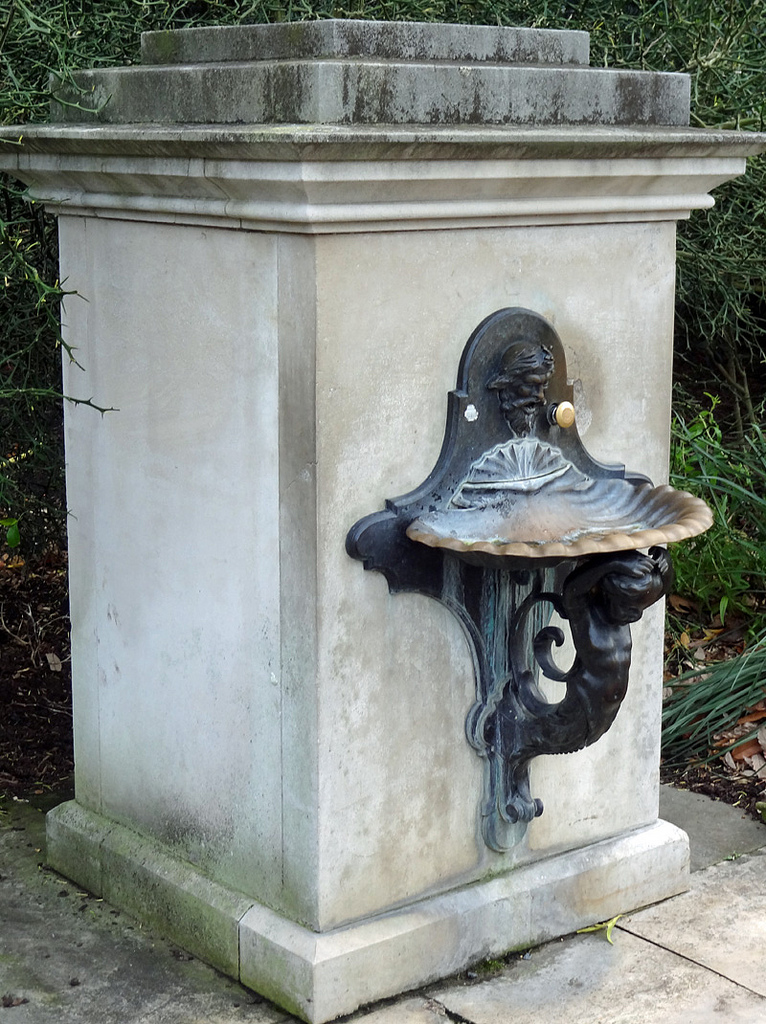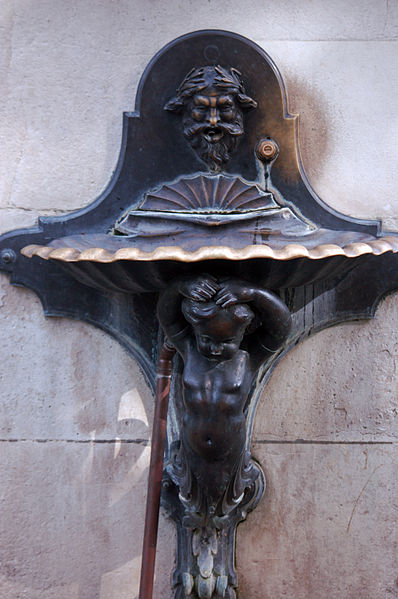Location: Selborne, East Hampshire, England
Inset into a masonry wall located on the B3006 at the south end of the village of Selborne, is a fountain and cattle trough. It was manufactured by the Saracen foundry from a design prepared by TP Hall, Portsmouth and donated to the Village by Mr. W. Mills in 1879.
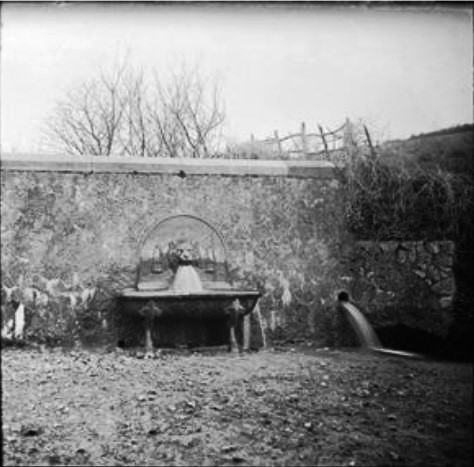

The structure consists of a trough supported by two cattle fetlocks and an arch plate with bas relief of a lion mascaron flanked by two windmills. It is surmised that the significance is related to a corn mill in Selborne and the Dorton water mill, no longer in existence. An inscription above the lion head states PRESENTED BY and the year 1879 is inscribed below the lion head.
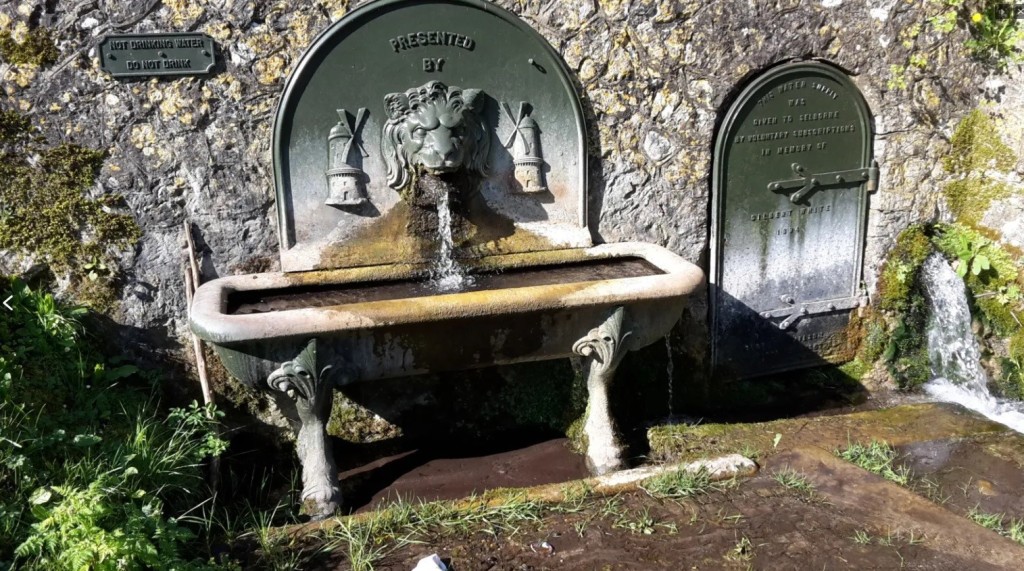
A spring rising from Noar Hill was the source of water which spouted from the mouth of the lion into a trough and also through a standing pipe. In 1894, to create a water-supply for the village, the spring was diverted by public subscription in memory of Gilbert White who was a local pioneering naturalist, ecologist, and ornithologist.
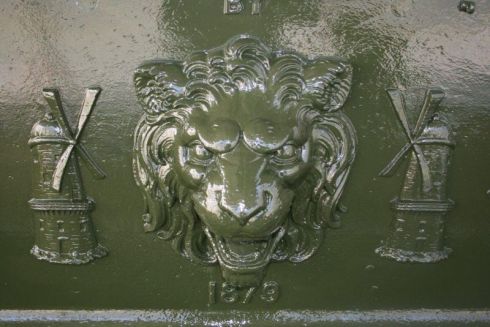
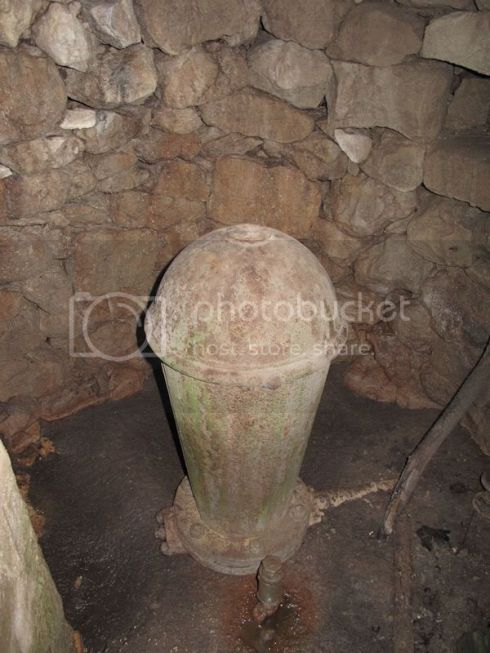
To the left is a plaque advising visitors that the water supply is NOT DRINKING WATER / DO NOT DRINK. An arched door on the right states: THIS WATER SUPPLY / WAS / GIVEN TO SELBORNE / BY VOLUNTARY SUBSCRIPTIONS / IN MEMORY OF / GILBERT WHITE / 1894. Behind the door is a hydraulic pump which pumped the water to stand pipes in the village until Selborne was supplied with piped water via the reservoir in 1934.
Restoration of the structures was completed by Ian Clark Restoration. Victorian Lions Head Drinking Fountain Restoration (ianclarkrestoration.com)
Glossary
- Bas-relief, sculpted material that has been raised from the background to create a slight projection from the surface
- Mascaron, a decorative element in the form of a sculpted face or head of a human being or an animal


